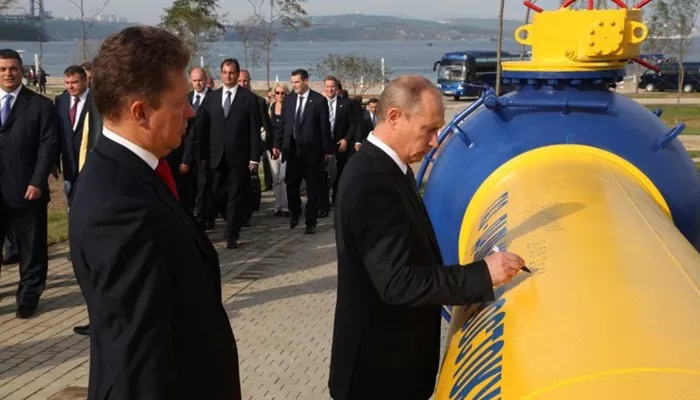For decades, Russian gas was viewed as the cornerstone of Europe’s industrial strength — a source of energy that was reliable, plentiful, and most importantly, affordable. Yet, as Europe breaks away from its reliance on Russian fossil fuels, the real cost of that long-standing dependence is coming into sharp focus. What was once hailed as an economic advantage has revealed itself to be a strategic vulnerability, with consequences stretching far beyond the balance sheet.
Today, the continent is undergoing a major energy transformation — one rooted in resilience, diversification, and sustainability. This shift, though urgent, is long overdue.
The Illusion of Affordability
For years, European policymakers and industries operated under the belief that Russian gas offered a bargain. Long-term contracts and oil-indexed pricing mechanisms made the gas appear stable and inexpensive. Nations like Germany, Austria, and Italy built much of their industrial strategy around this assumption.
But that perception has proven misleading. The so-called affordability of Russian gas obscured the geopolitical strings attached. In hindsight, what seemed like economic efficiency was a dangerous form of overreliance on a single supplier with a history of using energy as a tool of influence.
Economic Reality Sets In
The data from the past decade tells a more complex story than the narrative of “cheap gas” suggests. From 2010 to 2020, Russian gas prices through Gazprom’s oil-indexed contracts often sat just below European spot prices. Yet these marginal savings were only realized under specific market conditions — and they came with caveats.
By 2021, the cracks in that model became impossible to ignore. As Gazprom reduced gas flows during Europe’s post-COVID recovery, prices soared. Between late 2021 and early 2022 — spanning the period before and after Russia’s invasion of Ukraine — Russian pipeline gas was selling at rates equal to or exceeding those of liquefied natural gas (LNG) from the U.S. and Qatar.
The average cost of Russian gas imports rose above €40 per megawatt-hour in 2021 and climbed beyond €100/MWh in early 2022. These price spikes were not anomalies but consequences of deliberate supply manipulation. Moscow’s restriction of flows through Ukraine and Nord Stream pipelines forced European buyers into either paying inflated prices or frantically securing alternative sources.
By 2023, the advantage had evaporated entirely. With volumes slashed and trust eroded, Russian pipeline gas no longer offered any financial benefit. In its place, LNG became a more reliable and stabilizing force. The economic argument for Russian gas had collapsed.
Strategic Costs Hidden in Plain Sight
What made Russian gas appear inexpensive were the costs Europe didn’t account for — the risks of coercion, manipulation, and supply disruption.
These hidden liabilities became undeniable in 2022. When Russia invaded Ukraine, Europe’s heavy reliance on Russian energy curtailed its ability to respond swiftly and forcefully. This wasn’t the first time energy had been weaponized: earlier gas disruptions in 2006, 2009, and 2021 had already demonstrated Moscow’s willingness to leverage energy supply for political gain.
Every cubic meter of Russian gas deepened Europe’s exposure. Each contract enhanced Moscow’s strategic influence. Delays in diversifying the energy mix effectively enabled the Kremlin’s geopolitical ambitions. And every euro paid for Russian gas indirectly supported the same war machine that eventually crossed into Ukraine.
New Threats in the Grey Zone
Europe’s move to reduce Russian energy imports has not eliminated the risks — only shifted their form. In the wake of the war in Ukraine, there has been a surge in suspicious activities targeting European infrastructure: undersea cable sabotage, unexplained disruptions, and increased Russian surveillance around offshore assets.
Intelligence agencies across the continent have reported a rise in espionage and interference attempts, especially focused on energy networks. These developments underscore a sobering truth: energy dependence extends far beyond price tags. It encompasses vulnerabilities to asymmetric warfare, cyber threats, and covert action.
Europe’s energy infrastructure — from pipelines to LNG terminals and storage facilities — must now be safeguarded not just against market volatility but against foreign interference.
Conclusion
The belief that Russian gas was ever truly “cheap” must be reassessed. The short-term economic benefits were outweighed by long-term costs: geopolitical manipulation, energy insecurity, and strategic paralysis.
Europe has learned, at considerable expense, that energy choices are also sovereignty choices. The continent’s shift away from Russian gas is not simply a reaction to war — it is a necessary correction in pursuit of transparency, autonomy, and resilience.
The price of Russian gas, it turns out, was never just denominated in euros per megawatt-hour. It was measured in lost years, weakened diplomacy, and heightened risk. It is a price Europe cannot afford to pay again.


